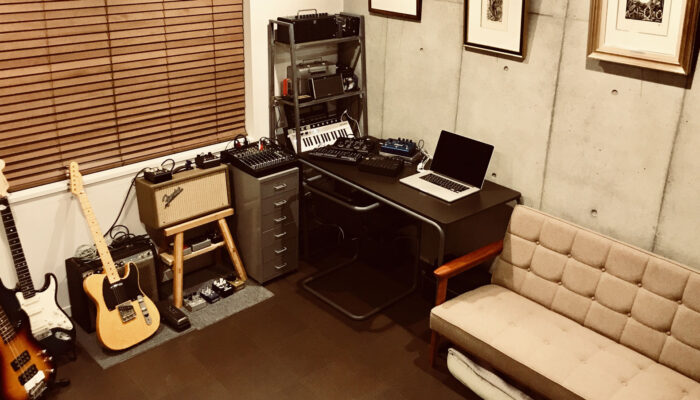Matthew McCormick – Lead Me Not Into Temptation
Sorcha Ní Cheallaigh talks to the renowned mixed-media artist for his solo London exhibition
“I wouldn’t say that the American Dream is completely dead,” Matthew McCormick says as his exhibition Lead Me Not Into Temptation moves into its final week in the newly established OMNI in London’s Eastcastle Street. Opening on the 9th of June on the eve of the highest petrol price hikes the U.K. has seen in over 17 years, McCormick’s displaced American fuelling stations and Martin-Kippenberger-inspired stop signs appeared prophetic and of the moment.

A multidisciplinary artist reimagining the iconography of the West Coast through a plethora of sculpture, re-appropriation, sketches, paintings and collages, McCormick has long established himself as a prime satirist of peculiarly American visual and verbal clichés. As the opening exhibition of the gallery, Lead Me Not Into Temptation turned OMNI into a playground for McCormick’s vision. The exhibition took the form of a nostalgia-fuelled melting pot spilling from the walls and into physical structures – a spontaneous overflow of collage representing the human thought process.
Invoking McCormick’s hometown of Los Angeles, the palettes were reminiscent of the sun-soaked California of David Hockney, alongside Edward Hopper’s shadowy panoramas and residues of neon. Samplings of advertising, text, and typography were reimagined by the artist in ways that felt didactic and sermonic, but, like many contemporary messages of urgency, are largely ignored within the overwhelming world of the work. “Lead me not into temptation,” one beautifully set retro-red text read, “for I’ll find it myself”.
SORCHA: Nice to meet you, Matt. How did the title Lead Me Not Into Temptation come to be, and what significance does it have for the work?
MATT: The show title came from a bumper sticker I found while researching imagery for this body of work. It ended up in one of the main pieces – “Temptation”. I loved how it started with the classic religious-based cadence but finished, “for I’ll find it myself” – such a great lowbrow, almost self-deprecating comical tone. History is littered with religious hypocrites who preach one thing and do the other. This quote seemed like a beautifully cheeky way to nod to that element of society, while also referencing the personal devil and angel dilemma that we all face at some point.

SORCHA: Can you tell us a bit about your process for the exhibition?
MATT: Doing traditional art shows in a dedicated gallery space had taken a back seat for me. I had gotten into a comfortable cycle of making works on a loose, unrestricted time schedule, and then presenting them to the world mostly via the internet. For Lead Me Not Into Temptation, I had a highly expedited time frame to actually get the show together. I brought in two bodies of work – Story Paintings and Into The Distance – that I had been exploring for a while but never shown.
Then I needed to tie everything together. I used more sculptural and experiential works to help guide the viewer through the show. I figured out what was possible in the space. I got really excited to venture outside the comfort of wall-based works. I started actualising the world that I’ve been building in a more three-dimensional manner and worked to further the experience of the viewer.

SORCHA: If you had to soundtrack the viewer’s experience of Lead Me Not Into Temptation, what songs would be playing?
MATT: I made a soundtrack for the show as a way to continue the collage approach to image-making in an audio form. It helped to further the questions and experience of the work. The standouts were: Paris, TX by Ry Coder, Winter’s Going by Bonnie Dobson, Lucky Strikes and Liquid Gold by Jeff Cowell, and High Command by Earth. But the whole playlist can be seen here.
SORCHA: How was the process of working with OMNI and presenting your distinct pastiche of American life in the city of London?
MATT: Working with OMNI was great! For a long time, I operated on my own time. I had my own way of existing within the art community, so to bring someone else into the equation was always hard to consider. Why rock the boat? With OMNI, I was met with the same drive and motivation that I was putting into the show. It really helped make the experience feel like a positive collaborative effort.

SORCHA: Your work is said to be based on conflicting histories of your hometown of L.A. How do space and memory play into it?
MATT: Space and memory would be two of the main catalysts for me when approaching a piece. You make work with what you have, and I definitely have my memories as faded or prominent as they happen to be. When it comes to making work, they are an endless mine to extract starting points, and pieces to open a dialogue.
SORCHA: The image of the cowboy, for example, has appeared consistently in your work throughout the years. Where does the motif originate from?
MATT: It started as an almost larger-than-life superhero character through old Western films, the Marlboro man, and Lone Ranger radio show episodes. But as time progressed it took on this almost symbolic representation of all things American. America is a subject that I have consistently chosen to explore, so the cowboy has continued to weave its way in and out of the work over and over again.

SORCHA: Are the cowboys featured in Lead Me Not Into Temptation connected to your earlier work?
MATT: Definitely. They’ve taken on a language of their own by acting as a symbol of sorts. Sometimes they need to be presented as a photo, sometimes a fully rendered oil painting, and everything in between. The subject dictates the medium, and restraining them to only one accent of the artistic language would do a disservice to the viewer and the works themselves.
SORCHA: You also play with signifiers. The cowboy seems to be both a symbol of the frontier and an advert for Stetson and Marlboro. How do you feel the commodification of the human has transformed the treatment of your subjects?
MATT: This would be one of the main reasons I tend to include so many inanimate objects in the work. As humans, we tend to acquire so many things that then, in a lot of cases, take on new meanings and levels of importance due to the memories and experiences that we attach to them. What can be as simple as a discarded crunched Coke can, can be part of a moment that forever changed someone’s life. It may be kept in the rear-view mirror of someone’s memory forever.

SORCHA: The demise of America feels prevalent in your work. Has the American dream died for you?
MATT: I wouldn’t say that the American Dream is completely dead. I would say that the harsh reality is that the white picket fence dream vs. the actual possibility of that is not as much of a reality as it was post World War II. Human greed takes a front seat to providing basic human needs, and the effects have sent shockwaves through everything from housing to education.
The scales have tipped severely and it’s to be determined if it can be recalibrated and balanced. Societally, we require so much stimulation and constant fulfilment we’re burning through everything at a high-speed rate. All one has to do is study the basics of history to know that all empires turn over, just like neighbourhoods gentrify and go into ruins. Do I think that the American empire and grip over the world will end? Time will tell. But, if I were a gambling man, I would bet on the facts of history.
Lead Me Not Into Temptation is on at the OMNI until July 3rd. Click here for information
Matthew McCormick has forthcoming shows in Los Angeles has exhibited in New York, Hong Kong, Miami, London, Los Angeles, Tokyo, Aspen, and San Francisco. For more information, click here.
To read our last art feature, click here




